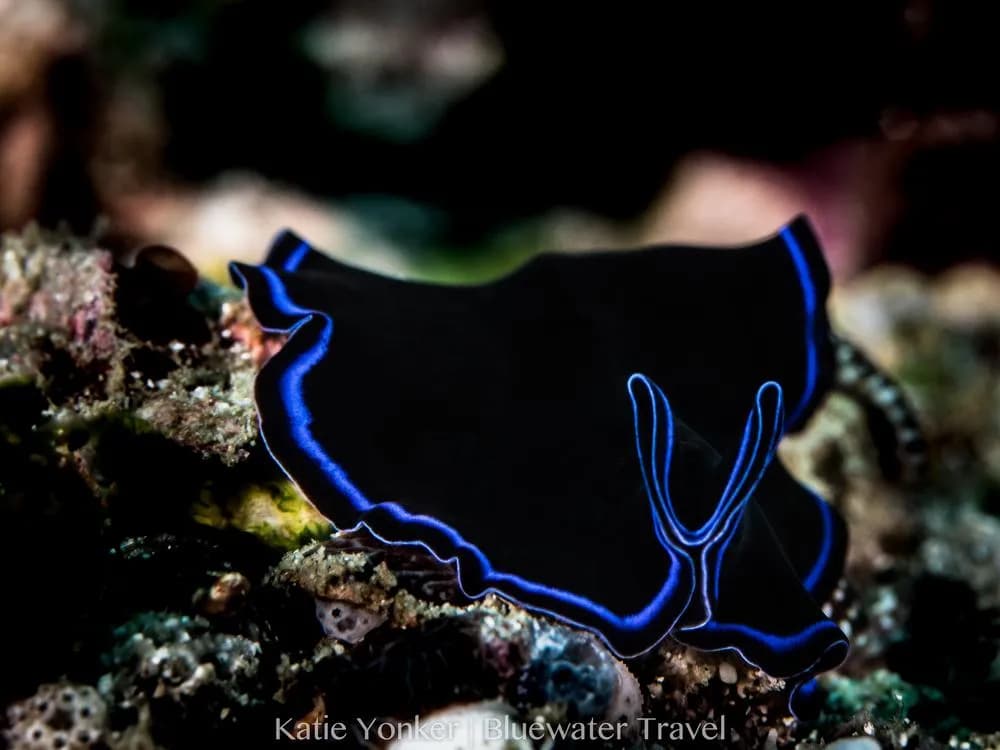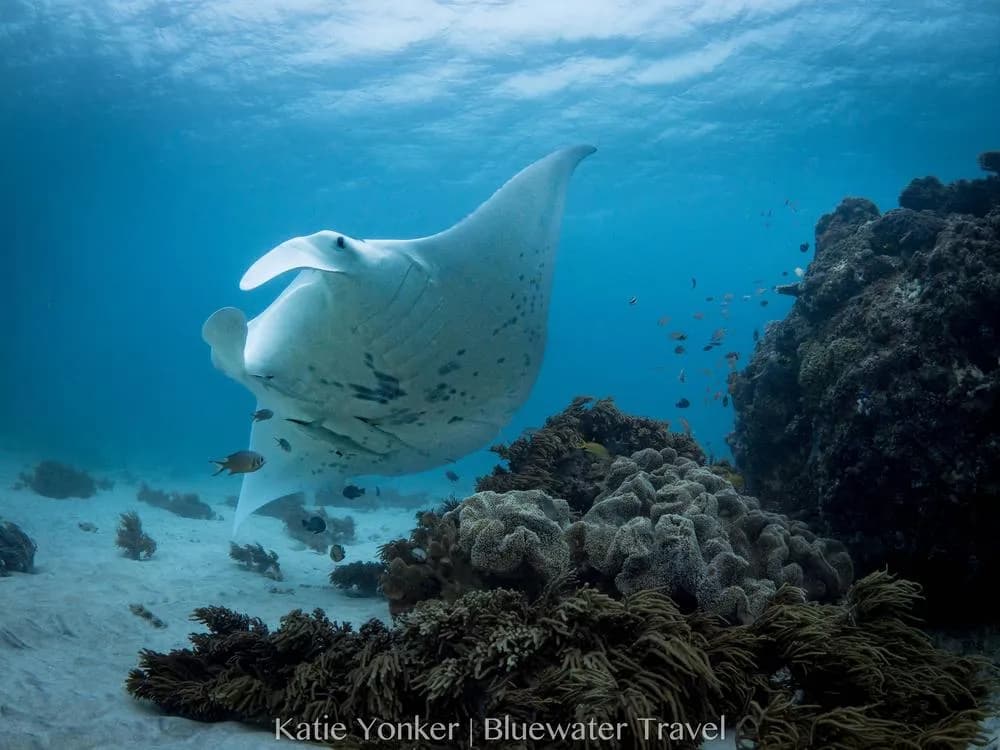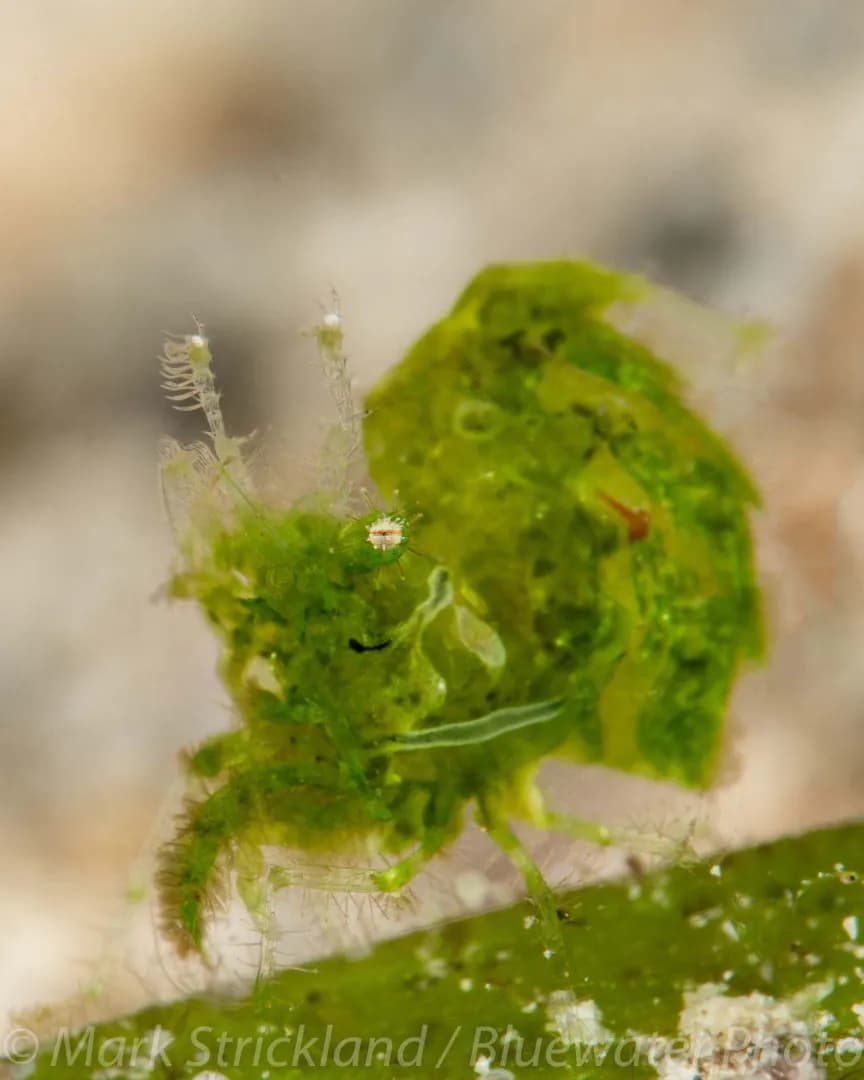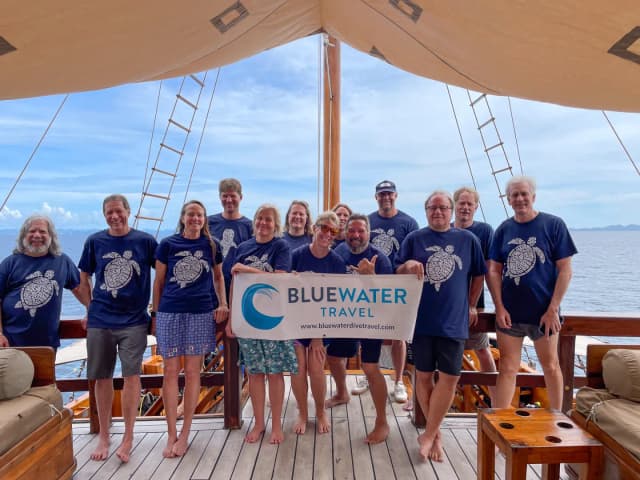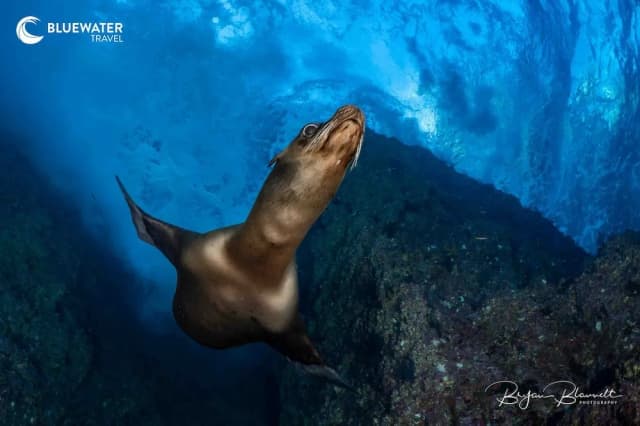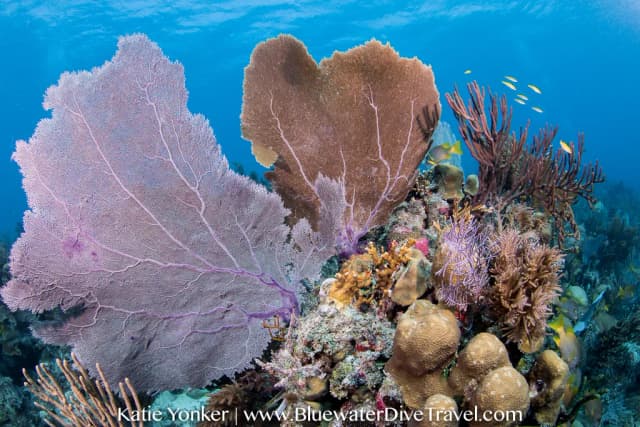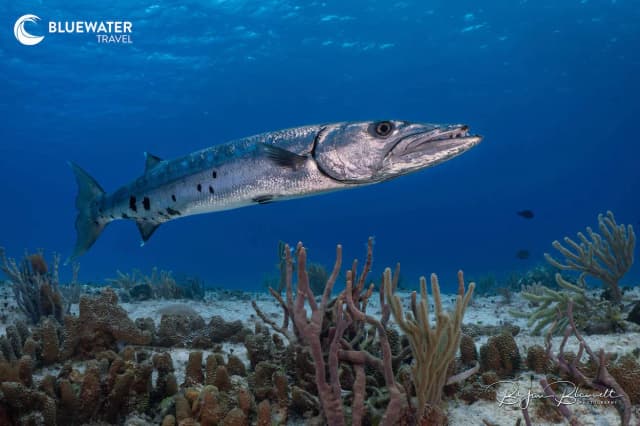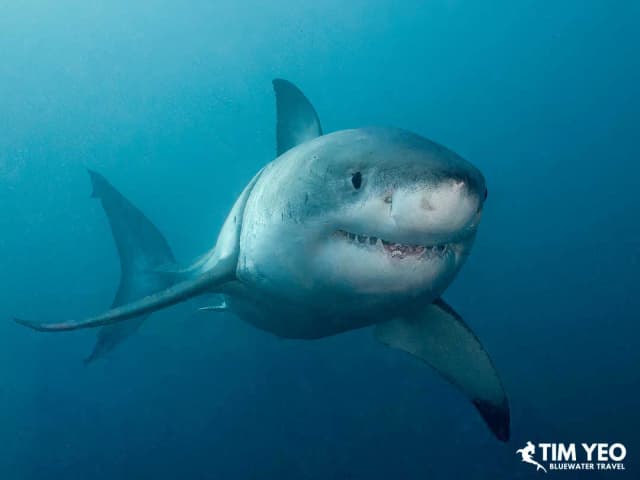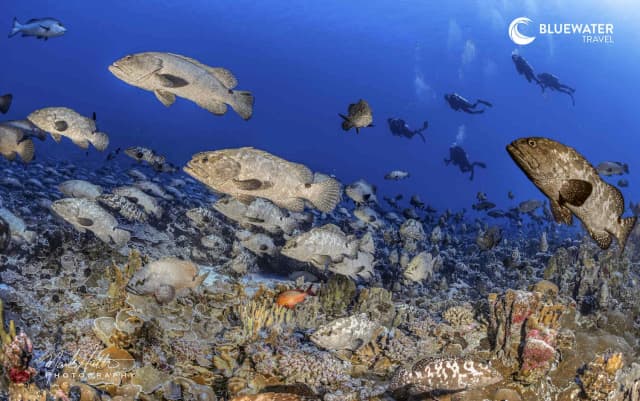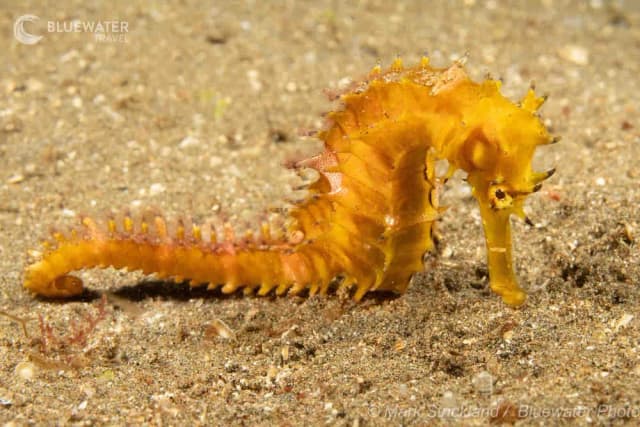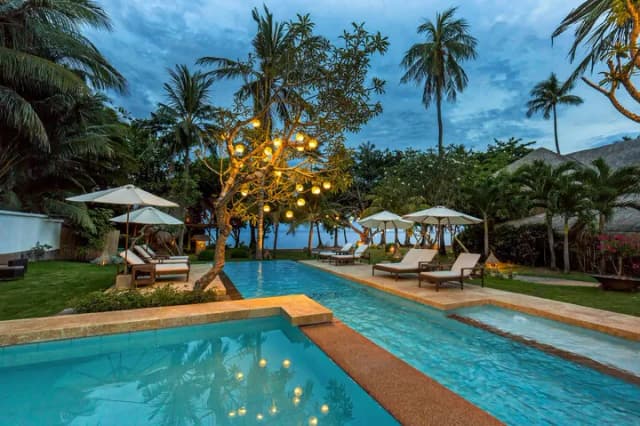Bluewater Travel Papua New Guinea Sept/Oct 2018 Trip Report
By Katie Yonker
Imagine a place where few divers have been, new marine species are discovered regularly, over 800 languages are spoken, and so rich with culture that youll wonder if youve been transported to another planet. A place where the vast majority of the population lives in rural areas with no facilities of modern life, and where tribes in the mountainous highlands have little or no contact with each other, let alone with the outside world. A land of geological contrasts, it is marked by 14,500-foot mountains, expansive rain forests, vast river delta systems, and pristine coral atolls. Such diversity is rivaled only by the people themselves, whose traditions remain an active part of everyday life and are as varied and breathtaking as the landscape that surrounds them. This is Papua New Guinea, and if youre looking for an off-the-grid adventure, look no further.
I had the privilege of bringing a group of nine others to experience this unique place, many of whom for the first time. Whether staying at a land-based dive resort or joining a liveaboard, the majority of travelers will spend their first night in the capital city of Port Moresby. Though it is true that Port Moresby does not have the best reputation in regards to safety, the Airways Hotel is a fully gated complex only a stones throw from the airport and is a wonderful way to start your PNG vacation. This luxurious hotel boasts comfortable accommodations, a beautiful outdoor restaurant overlooking the airport, a lovely spa, infinity pool, health and fitness center, business facilities, and a cute boutique full of local handicrafts. After a long day or two of travel, we were happy to relax here for a night and share in each others excitement of what was to come.
Diving In Milne Bay, Papua New Guinea
The following day we boarded the MV Chertan liveaboard, owned and operated by Rob Van der Loos, a pioneer of diving in Milne Bay. There are few people who have been in the area as long as Rob, and passengers onboard should look forward to hearing incredible stories of what its like living in PNG, now and in decades past. Do not expect luxury onboard Chertan. Its a basic boat the cabins are cozy and most have shared bathrooms and/or showers. But what Chertan lacks in pizzazz it makes up for in a top-notch crew and exceptional diving opportunities where youll undoubtedly be the only group at the dive site.
See also: Scuba Diving in Papua New Guinea: Dive Travel Guide
Our first day diving was spent at Samarai Island and Government Pier. Theres no shortage of critters here and macro photographers will be in heaven. Liveaboards typically anchor off from the jetty and use tender boats to drop you in at your selected point. Theres quite a lot of territory to cover as the overall area stretches about 650 feet. The first two dives were spent under the main pier where we found mantis shrimp, a crocodilefish, razorfish, octopus, several nudibranchs including one laying eggs, and a plethora of pipefish. The afternoon dive under Government Pier treated us to massive schools of fish under the docks so much so that one could get vertigo swimming through them.




The following day we headed to Gunabalabala, one of the more reliable places to find manta rays in Milne Bay. Within minutes of descending, the mantas arrived and we spent the majority of the dive watching them swim in circles, dancing around the reef. After two dives with the mantas we headed to Decka Decka, home to many of the oldest and most beautiful nudibranchs Ive ever seen, including the stiliger smaragdinus and dendrodoris tuberculosa, which looked more like a flower garden than a nudibranch.




The following day we visited Kwato, a small island with a rich history, and home to 75 or so permanent residents. In 1891, Rev. Charles Abel and his wife Beatrice founded a mission on this island which later developed into a non-hierarchical church and self-supporting mission, teaching boat-building, agriculture, and management skills. Missionaries still have a presence on the island today - at the time of our visit, a few Australian women were onsite teaching the local women how to make jewelry, which would later be sold in other villages, providing the women an opportunity to earn an income. We also took a leisurely 15-minute hike to the top of the island to see what is said to be the oldest church in Papua New Guinea. For such a small island, there was plenty to see and many people eager to interact with us. The diving didnt disappoint either! Here we found a wunderpus, cowries, octopus, pipefish, and several nudibranchs.




We started off the next day doing one dive at Little China, a coral mound rising up 150 feet. While this is a great place for wide angle photography, the Severns Pygmy Seahorse was what we were after. After spending 20 minutes staring at every nook and cranny of the rock where the seahorse is commonly found, I was relieved to have the help of the guide, who spotted the seahorse almost immediately.
After Little China we headed to Crinoid City where we found not one, but two lacy rhinopia side-by-side. We finished off the day at Wahoo Point, a site that used to be frequented by hammerheads, mantas, whale sharks, and minke whales. Seeing pelagics here is not nearly as common as it once was, but we did spot a host of macro critters that made the diving very worthwhile.


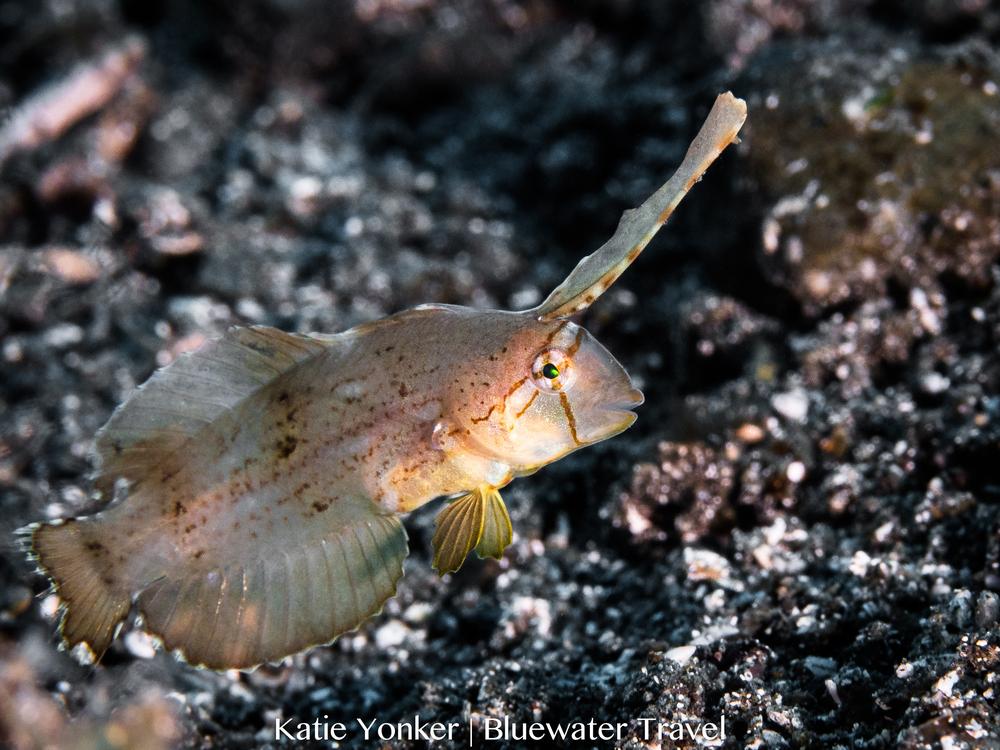

The following day was spent at Michelles Reef. Located on the north coast, this is one of the best sites for both macro and wide angle. This site consists of a shallow wall dropping off to 25 feet, including beautiful swim throughs with gorgonians growing off the wall and sea bed. The topography here is wonderful - I spent some time swimming along the wall and found the perfect little alcove to take some split shots. Adjacent to the reef is a shallow muck area, home to several critters including mantis shrimp, octopus, and a multitude of crabs.




The final day was spent at Lauadi, which is essentially two dives in one. To the left of the boat is a nice wide angle site with healthy hard corals and some lovely sea fans. To the right of the boat is a nice muck site where we found at least three different colors of ornate ghost pipefish, a spotfin frogfish, several sapsucking sea slugs, and mating nudibranchs. We finished off the liveaboard trip by doing two dives at Cobbs Cliff where we saw dartfish and a cuttlefish.


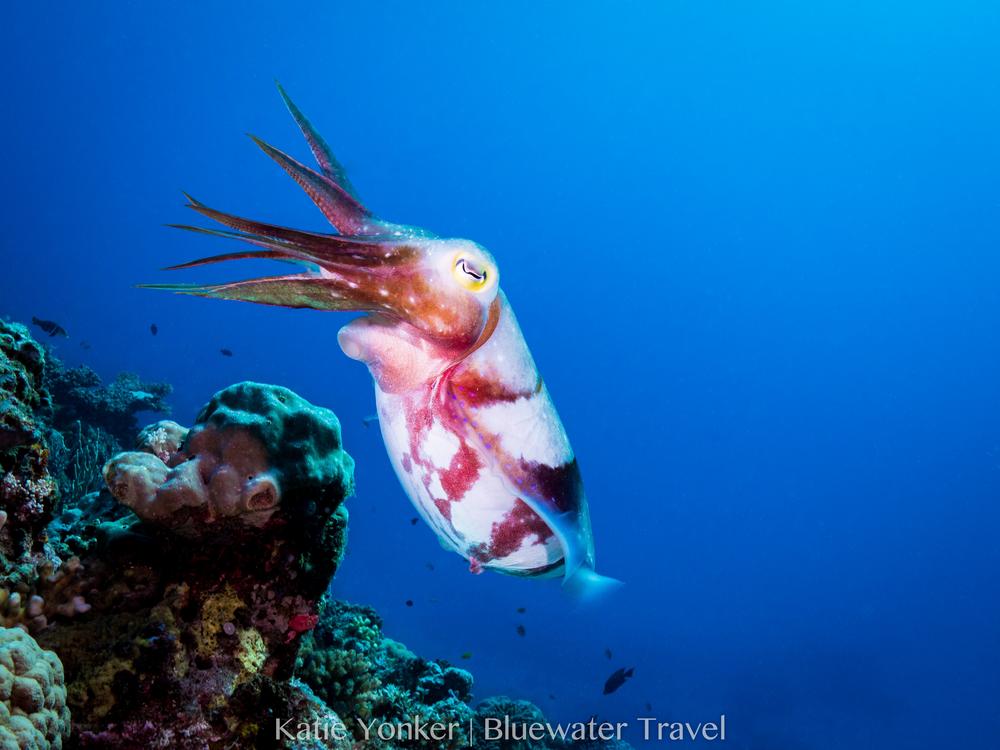


Though diving was the primary focus of this trip, the cultural land tour that followed had me equally excited. Visiting the highlands of Papua New Guinea is an unparalleled opportunity to witness truly unique customs and lifestyles that you can see few other places in the world. It is estimated that more than 7,000 different cultural groups exist in Papua New Guinea. Because of this diversity, in which they take pride, many different styles of cultural expression have emerged; each group has created its own expressive forms of art, dance, weaponry, costumes, singing, music, architecture and much more. We spent 3 nights in Mount Hagen at Rondon Ridge, a lovely hotel perched atop a hill with sweeping vistas of the countryside.
On the first day of our tour, we were incredibly fortunate to visit a tribe of Huli Wigman who performed a small sing-sing for us. When dressed in their characteristic face paint and elaborate headdresses, the Huli Wigmen represent some of the most iconic imagery in all of Papua New Guinea. We then visited Avi Village where we encountered the Skeleton Boys. Their tradition of dressing up as corpses was used as a way to scare off their enemies. We finished off the day by visiting Tolsi Village where we saw a courtship demonstration and spent a great deal of time interacting with the villagers.
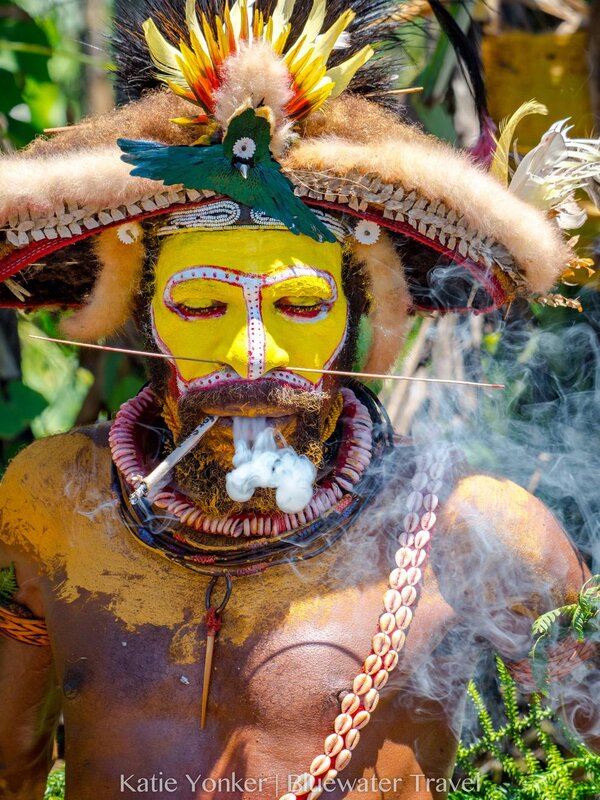


Our second day was spent visiting four separate villages where we witnessed a fire ceremony and a very mysterious performance by the Mud Men. For centuries, the Asaro 'Mud Men' of the Western Highlands have adorned themselves with mud, clay masks, and bamboo finger extensions to look like evil spirits. While the masks have different origin stories, its believed that in the 1800s, tribesmen would raid other villages - for their women or pigs - while intimidating their enemies with large masks and bamboo spears. The masks have evolved over the years and have now become thick, heavy headdresses that can be worn for only a few minutes as part of brief cultural performances. We took turns trying on their clay headdresses, which felt as if someone had placed a 20 pound bowling ball on your head.



Our final day of the land tour included a mourning demonstration in Kolghi Village, a walk through the Kingalru Village to observe their agricultural and farming practices, and a trip to Kutmb Village to meet the chief and three of his fives wives. It was here that we were also treated to a sing-sing by several Melpa women, adorned in the most decorated headdresses we encountered on our trip.



Its nearly impossible to put into words the full experience of visiting Papua New Guinea a place so different, remote, remarkable, and uninfluenced by tourism. For those undeterred by the long travel to get there, lack of infrastructure outside the capital city, and who are okay exploring a country that defines off the beaten path, a trip to Papua New Guinea is a dream come true. As much as I want it to remain relatively unknown to most travelers, I would be doing a disservice to these incredible people if I didn't make it known that Papua New Guinea was hands down, the most unique country I've ever visited.

Interested in diving Papua New Guinea? Join our 2019 Papua New Guinea Photo Workshop or join Katie on her 2020 PNG trip! Can't join our trips? Contact us to plan your perfect trip to PNG based on your requirements and preferences! Let us know if you want to go places like Milne Bay, a unique dive resort like Walindi Plantation Resort, or off the beaten track on a PNG liveaboard.
About the Author
Katie Yonker is the Director of Operations and a Travel Advisor for Bluewater Travel. An avid diver and travel planner, Katies adventures have taken her to the far reaches of the globe to destinations such as Micronesia, Indonesia, the Philippines, French Polynesia, Palau, Australia, Papua New Guinea, Fiji, Red Sea, South Africa, Maldives, Hawaii, Galapagos, Cocos, Socorro, Central America, the Caribbean, and many non-dive locations.
